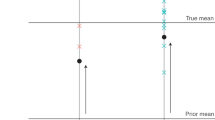Abstract
Intelligent assistants are handling increasingly critical tasks, but until now, end users have had no way to systematically assess where their assistants make mistakes. For some intelligent assistants, this is a serious problem: if the assistant is doing work that is important, such as assisting with qualitative research or monitoring an elderly parent’s safety, the user may pay a high cost for unnoticed mistakes. This paper addresses the problem with WYSIWYT/ML (What You See Is What You Test for Machine Learning), a human/computer partnership that enables end users to systematically test intelligent assistants. Our empirical evaluation shows that WYSIWYT/ML helped end users find assistants’ mistakes significantly more effectively than ad hoc testing. Not only did it allow users to assess an assistant’s work on an average of 117 predictions in only 10 minutes, it also scaled to a much larger data set, assessing an assistant’s work on 623 out of 1,448 predictions using only the users’ original 10 minutes’ testing effort.
Access this chapter
Tax calculation will be finalised at checkout
Purchases are for personal use only
Preview
Unable to display preview. Download preview PDF.
Similar content being viewed by others
References
Abraham, R., Erwig, M.: AutoTest: A tool for automatic test case generation in spreadsheets. In: Proc. VL/HCC, pp. 43–50. IEEE, Los Alamitos (2006)
Baeza-Yates, R., Ribeiro-Neto, B.: Modern Information Retrieval. Addison-Wesley Longman Publishing Co., Inc., Boston (1999)
Beizer, B.: Software Testing Techniques. International Thomson Computer Press (1990)
Blackwell, A.: First steps in programming: A rationale for attention investment models. In: Proc. HCC, pp. 2–10. IEEE, Los Alamitos (2002)
Burnett, M., Cook, C., Rothermel, G.: End-user software engineering. Comm. ACM 47(9), 53–58 (2004)
Chang, C., Lin, C.: LIBSVM: A library for support vector machines (2001), http://www.csie.ntu.edu.tw/~cjlin/libsvm
Fisher, M., Cao, M., Rothermel, G., Brown, D., Cook, C., Burnett, M.: Integrating automated test generation into the WYSIWYT spreadsheet testing methodology. ACM Trans. Software Engineering and Methodology 15(2), 150–194 (2006)
Frankl, P., Weiss, S.: An experimental comparison of the effectiveness of branch testing and data flow testing. IEEE Trans. Software Eng. 19(3), 202–213 (1993)
Glass, A., McGuinness, D., Wolverton, M.: Toward establishing trust in adaptive agents. In: Proc. IUI, pp. 227–236. ACM, New York (2008)
Gmail Priority Inbox: Get through your email faster, http://google.com/mail/help/priority-inbox.html (accessed September 16, 2010)
Green, T., Petre, M.: Usability analysis of visual programming environments: A cognitive dimensions framework. J. Visual Languages and Computing 7(2) (June 1996)
Grigoreanu, V., Cao, J., Kulesza, T., Bogart, C., Rector, K., Burnett, M., Wiedenbeck, S.: Can feature design reduce the gender gap in end-user software development environments? In: Proc. VL/HCC, pp. 149–156. IEEE, Los Alamitos (2008)
Hastie, T., Tibshirani, R., Friedman, J.: The Elements of Statistical Learning. Springer, Heidelberg (2003)
IEEE, IEEE Standard Glossary of Software Engineering Terminology (IEEE Std610.12-1990) (1990)
Klann, M., Paterno, F., Wulf, V.: Future perspectives in end-user development. In: Lieberman, H., Paterno, F., Wulf, V. (eds.) End-User Development. Springer, Heidelberg (2006)
Kniesel, G., Rho, T.: Newsgroup data set (2005), http://www.ai.mit.edu/jrennie/20newsgroups
Kulesza, T., Wong, W., Stumpf, S., Perona, S., White, R., Burnett, M., Oberst, I., Ko, A.: Fixing the program my computer learned: Barriers for end users, challenges for the machine. In: Proc. IUI, pp. 187–196. ACM, New York (2009)
Kulesza, T., Stumpf, S., Burnett, M., Wong, W., Riche, Y., Moore, T., Oberst, I., Shinsel, A., McIntosh, K.: Explanatory debugging: Supporting end-user debugging of machine-learned programs. In: Proc. VL/HCC. IEEE, Los Alamitos (2010)
Lawrance, J., Bogart, C., Burnett, M., Bellamy, R., Rector, K., Fleming, S.: How programmers debug, revisited: An information foraging theory perspective. IEEE Trans. Software Engineering (2011)
Lim, B., Dey, A., Avrahami, D.: Why and why not explanations improve the intelligibility of context-aware intelligent systems. In: Proc. CHI, pp. 2119–2128. ACM, New York (2009)
Lim, B., Dey, A.: Toolkit to support intelligibility in context-aware applications. In: Proc. Int. Conf. Ubiquitous Computing. ACM, New York (2010)
Miller, R., Myers, B.: Outlier finding: Focusing user attention on possible errors. In: Proc. UIST, pp. 81–90. ACM, New York (2001)
Raghavan, H., Madani, O., Jones, R.: Active learning with feedback on both features and instances. JMLR 7, 1655–1686 (2006)
Raz, O., Koopman, P., Shaw, M.: Semantic anomaly detection in online data sources. In: Proc. ICSE, pp. 302–312. IEEE, Los Alamitos (2002)
Rothermel, G., Burnett, M., Li, L., Dupuis, C., Sheretov, A.: A methodology for testing spreadsheets. ACM Trans. Software Engineering and Methodology 10(1) (January 2001)
Rowan, J., Mynatt, E.: Digital family portrait field trial: Support for aging in place. In: Proc. CHI, pp. 521–530. ACM, New York (2005)
Scaffidi, C.: Unsupervised inference of data formats in human-readable notation. In: Proc. Int. Conf. Enterprise Integration Systems, pp. 236–241 (2007)
Settles, B.: Active learning literature survey. Computer Sciences Technical Report 1648, University of Wisconsin–Madison (2009)
Shen, J., Dietterich, T.: Active EM to reduce noise in activity recognition. In: Proc. IUI, pp. 132–140. ACM, New York (2007)
Talbot, J., Lee, B., Kapoor, A., Tan, D.: EnsembleMatrix: Interactive visualization to support machine learning with multiple classifiers. In: Proc. CHI, pp. 1283–1292. ACM, New York (2009)
Tullio, J., Dey, A., Chalecki, J., Fogarty, J.: How it works: A field study of non-technical users interacting with an intelligent system. In: Proc. CHI, pp. 31–40. ACM, New York (2007)
Wong, W.-K., Oberst, I., Das, S., Moore, T., Stumpf, S., McIntosh, K., Burnett, M.: End-user feature labeling: A locally-weighted regression approach. In: Proc IUI. ACM, New York (2011)
Author information
Authors and Affiliations
Editor information
Editors and Affiliations
Rights and permissions
Copyright information
© 2011 Springer-Verlag Berlin Heidelberg
About this paper
Cite this paper
Kulesza, T. et al. (2011). Where Are My Intelligent Assistant’s Mistakes? A Systematic Testing Approach. In: Costabile, M.F., Dittrich, Y., Fischer, G., Piccinno, A. (eds) End-User Development. IS-EUD 2011. Lecture Notes in Computer Science, vol 6654. Springer, Berlin, Heidelberg. https://doi.org/10.1007/978-3-642-21530-8_14
Download citation
DOI: https://doi.org/10.1007/978-3-642-21530-8_14
Publisher Name: Springer, Berlin, Heidelberg
Print ISBN: 978-3-642-21529-2
Online ISBN: 978-3-642-21530-8
eBook Packages: Computer ScienceComputer Science (R0)




